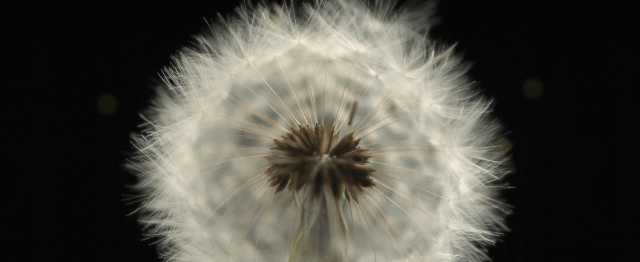
Two Mice - Katsushika Hokusai

Mice Pass The Mirror Test - A Classic Indicator Of Self-Recognition
December 5, 2023 - Cell Press
Summary:
Researchers report December 5 in the journal Neuron that mice display behavior that resembles self-recognition when they see themselves in the mirror.
When the researchers marked the foreheads of black-furred mice with a spot of white ink, the mice spent more time grooming their heads in front of the mirror -- presumably to try and wash away the ink spot.
However, the mice only showed this self-recognition-like behavior if they were already accustomed to mirrors, if they had socialized with other mice who looked like them, and if the ink spot was relatively large.

The team identified a subset of neurons in the hippocampus that are involved in developing and storing this visual self-image, providing a first glimpse of the neural mechanisms behind self-recognition, something that was previously a black box in neurobehavioral research.
"To form episodic memory, for example, of events in our daily life, brains form and store information about where, what, when, and who, and the most important component is self-information or status," says neuroscientist and senior author Takashi Kitamura of University of Texas Southwestern Medical Center.
"Researchers usually examine how the brain encodes or recognizes others, but the self-information aspect is unclear."
The researchers used a mirror test to investigate whether mice could detect a change in their own appearance -- in this case, a dollop of ink on their foreheads.
Because the ink also provided a tactile stimulus, the researchers tested the black-furred mice with both black and white ink.
Though the mirror test was originally developed to test consciousness in different species, the authors note that their experiments only show that mice can detect a change in their own appearance, but this does not necessarily mean that they are "self-aware."
They found that mice could indeed detect changes to their appearance, but only under certain conditions.
Mice who were familiar with mirrors spent significantly more time grooming their heads (but not other parts of their bodies) in front of the mirror when they were marked with dollops of white ink that were 0.6 cm2 or 2 cm2.
However, the mice did not engage in increased head grooming when the ink was black -- the same color as their fur -- or when the ink mark was small (0.2 cm2), even if the ink was white, and mice who were not habituated to mirrors before the ink test did not display increased head grooming in any scenario.
"The mice required significant external sensory cues to pass the mirror test -- we have to put a lot of ink on their heads, and then the tactile stimulus coming from the ink somehow enables the animal to detect the ink on their heads via a mirror reflection," says first author Jun Yokose of University of Texas Southwestern Medical Center.
"Chimps and humans don't need any of that extra sensory stimulus."
Using gene expression mapping, the researchers identified a subset of neurons in the ventral hippocampus that were activated when the mice "recognized" themselves in the mirror.
When the researchers selectively rendered these neurons non-functional, the mice no longer displayed the mirror-and-ink-induced grooming behavior.
A subset of these self-responding neurons also became activated when the mice observed other mice of the same strain (and therefore similar physical appearance and fur color), but not when they observed a different strain of mouse that had white fur.
Because previous studies in chimpanzees have suggested that social experience is required for mirror self-recognition, the researchers also tested mice who had been socially isolated after weaning.
These socially isolated mice did not display increased head grooming behavior during the ink test, and neither did black-furred mice that were reared alongside white-furred mice.
The gene expression analysis also showed that socially isolated mice did not develop self-responding neuron activity in the hippocampus, and neither did the black-furred mice that were reared by white-furred mice, suggesting that mice need to have social experiences alongside other similar-looking mice in order to develop the neural circuits required for self-recognition.
"A subset of these self-responding neurons was also reactivated when we exposed the mice to other individuals of the same strain," says Kitamura.
"This is consistent with previous human literature that showed that some hippocampal cells fire not only when the person is looking at themselves, but also when they look at familiar people like a parent."
Next, the researchers plan to try to disentangle the importance of visual and tactile stimuli to test whether mice can recognize changes in their reflection in the absence of a tactile stimulus -- perhaps by using technology similar to the filters on social media apps that allow people to give themselves puppy-dog faces or bunny ears.
They also plan to study other brain regions that might be involved in self-recognition and to investigate how the different regions communicate and integrate information.
"Now that we have this mouse model, we can manipulate or monitor neural activity to comprehensively investigate the neural circuit mechanisms behind how self-recognition-like behavior is induced in mice," says Yokose.
This research was supported by the Endowed Scholar Program, the Brain & Behavior Research Foundation, the Daiichi Sankyo Foundation of Life Science, and Uehara Memorial Foundation.
--
Journal Reference:
Jun Yokose, William D. Marks, Takashi Kitamura. Visuotactile integration facilitates mirror-induced self-directed behavior through activation of hippocampal neuronal ensembles in mice. Neuron, 2023; DOI: 10.1016/j.neuron.2023.10.022


Still Life with Spherical Mirror - M.C. Escher (1934)

Story Source:
https://www.sciencedaily.com/releases/2023/12/231205114726.htm
Materials provided by Cell Press.
Artwork: © M.C. Escher @ fair use



Thank you so much for your support of Through the Looking Glass and for being a patron of science and the arts.
Best wishes!

“Only art and science make us suspect the existence of life to a higher level, and maybe also instill hope thereof.”
~ Ludwig van Beethoven

